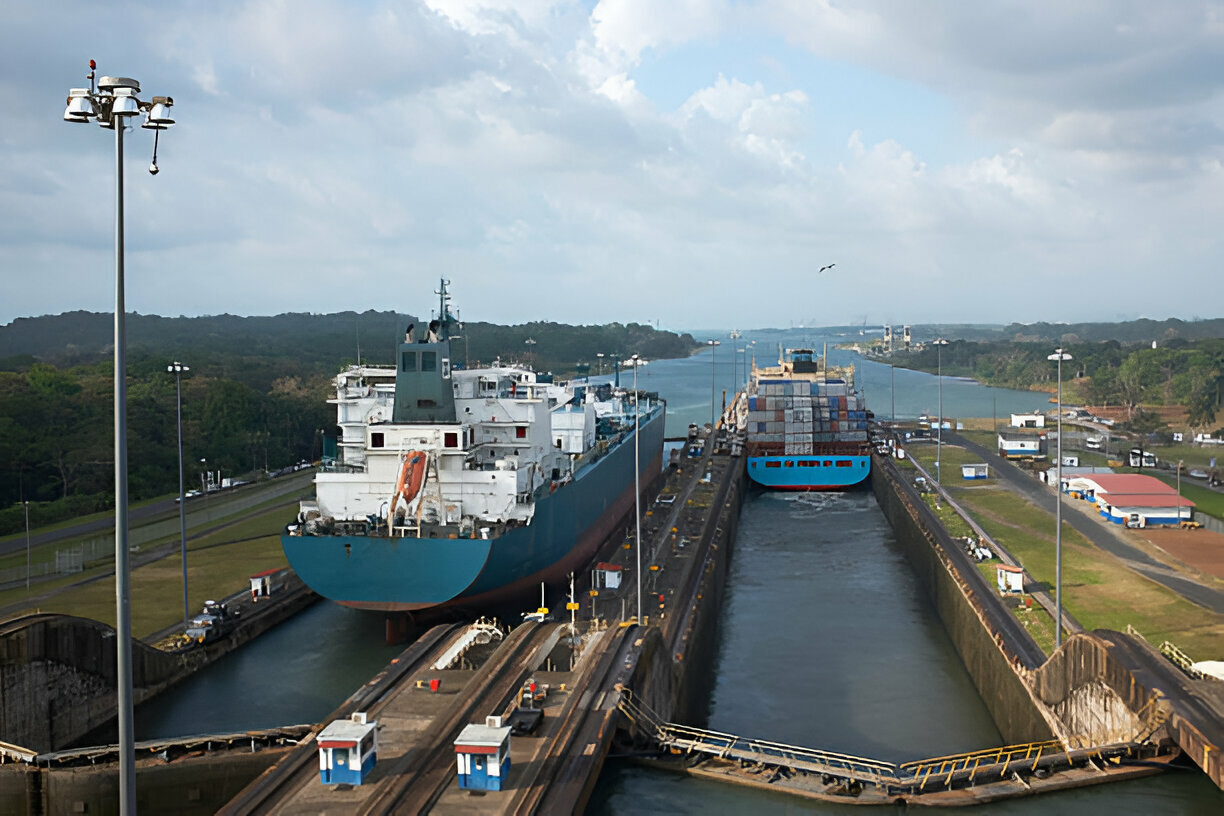📌 The Panama Canal is one of the world’s most important trade routes, handling around 6% of global commerce. But how much money does it generate daily? Some ships pay over $1 million just to pass through, making the canal a major financial powerhouse. But where does all this money go? Who profits from it? And why is the canal now at the center of rising tensions between the U.S., Panama, and China? Let’s break it all down.
📌 Related: Panama Canal Authority Official Reports (Official ACP Website for Toll Rates & Reports)
How Much Money Does the Panama Canal Make Per Day?
The Panama Canal generates between $8 million and $12 million daily, depending on the number and type of ships passing through. On average, about 35-40 ships use the canal each day, paying fees that vary based on ship size, cargo, and priority status.
💰 Estimated Annual Revenue: $3.5 billion to $4 billion
🚢 Average Ships Per Day: 35-40
🏗️ Largest Toll Paid: Over $1 million per vessel

The 2016 expansion allowed larger Neopanamax ships to pass through, dramatically increasing revenue. The Panama Canal Authority (ACP) now charges some of the highest tolls in global shipping, making it a critical economic asset.
How Does the Panama Canal Charge Ships?
The Panama Canal Authority (ACP) determines toll rates based on:
✅ Vessel Size – Larger ships pay higher fees.
✅ Cargo Type – Container ships, oil tankers, and cruise liners have different pricing models.
✅ Priority Passage – Ships can bid millions to skip long queues.
Panama Canal Toll Fees (By Ship Type)
| Ship Type | Average Toll |
|---|---|
| Panamax Cargo Ships | $55,000 – $450,000 |
| Neopanamax Ships | $500,000 – $1,000,000+ |
| Cruise Ships | $250,000 – $900,000+ |
| Yachts & Small Boats | $800 – $3,000 |
Larger vessels, like Neopanamax tankers, pay the most due to their size and water displacement.
The Most Expensive Ship Toll Ever Paid
🚢 Norwegian Bliss (Cruise Ship) – Paid $870,000
🚢 Ever Given (Container Ship) – Paid $700,000
🚢 Neopanamax Oil Tankers – Have paid over $1 million per crossing
Ships can also bid millions to jump ahead in line, further boosting the canal’s revenue.
Who Collects the Money from the Panama Canal?
The Panama Canal Authority (ACP) manages all toll revenue. But where does the money go?
📌 Panama Government: The ACP transfers billions to the national treasury, funding public services.
📌 Infrastructure & Maintenance: Ongoing expansions and repairs ensure efficient operations.
📌 Economic Growth: Profits help strengthen Panama’s economy, making the canal its biggest income source.
Since Panama took full control in 1999, the canal has become a major pillar of the country’s economy.
U.S.-Panama Canal Tensions: Trump’s Threat to Take It Back
The Panama Canal has now become a political battleground, with tensions rising between the United States, Panama, and China.
On February 5, 2025, the Panama Canal Authority (ACP) denied a U.S. State Department claim that an agreement had been reached to allow U.S. government vessels to cross the canal for free.
📌 Key Developments in the U.S.-Panama Canal Dispute:
1️⃣ The ACP stated that it had not made any changes to toll policies.
2️⃣ President Donald Trump has repeatedly threatened to take back control of the canal.
3️⃣ The U.S. claims Panama is overcharging American vessels, costing the U.S. government millions.
4️⃣ Trump accuses Panama of ceding control of the canal to China, which both Panama and China deny.
5️⃣ Secretary of State Marco Rubio visited Panama, pressuring its leaders to withdraw from China’s Belt and Road Initiative.
📌 Related: Can Trump Take Over the Panama Canal? Al Jazeera Analysis (Expert geopolitical analysis on U.S.-Panama tensions)
Since winning the 2024 U.S. election, Trump has refused to rule out military action to seize control of the canal if no deal is reached.
Why Do Ships Pay So Much to Use the Panama Canal?

The Panama Canal significantly reduces travel time and costs for ships transporting goods between the Atlantic and Pacific Oceans. Without it, vessels must take the longer and more expensive route around South America’s Cape Horn, adding thousands of extra miles to their journey.
⏳ Time Saved: Up to 8,000 nautical miles and 10+ days of travel
⛽ Fuel Savings: Ships save hundreds of thousands in fuel costs
💵 Trade Efficiency: Faster deliveries = higher profits for shipping companies
Even though the tolls are high, using the Panama Canal is often much cheaper than taking alternative routes.
Final Thoughts: Is the Panama Canal Worth Its Price?
✔ The Panama Canal makes over $8M-$12M daily, contributing billions to Panama’s economy.
✔ Some ships pay over $1M per crossing, proving the canal’s importance in global trade.
✔ Despite high costs, the canal remains the fastest and most efficient route for ships.
✔ However, rising U.S.-Panama tensions could impact future toll policies.
With Trump threatening to take back the canal, the future of this critical trade route remains uncertain.
🚢 What do you think? Should the U.S. reclaim control of the Panama Canal? Comment below!
